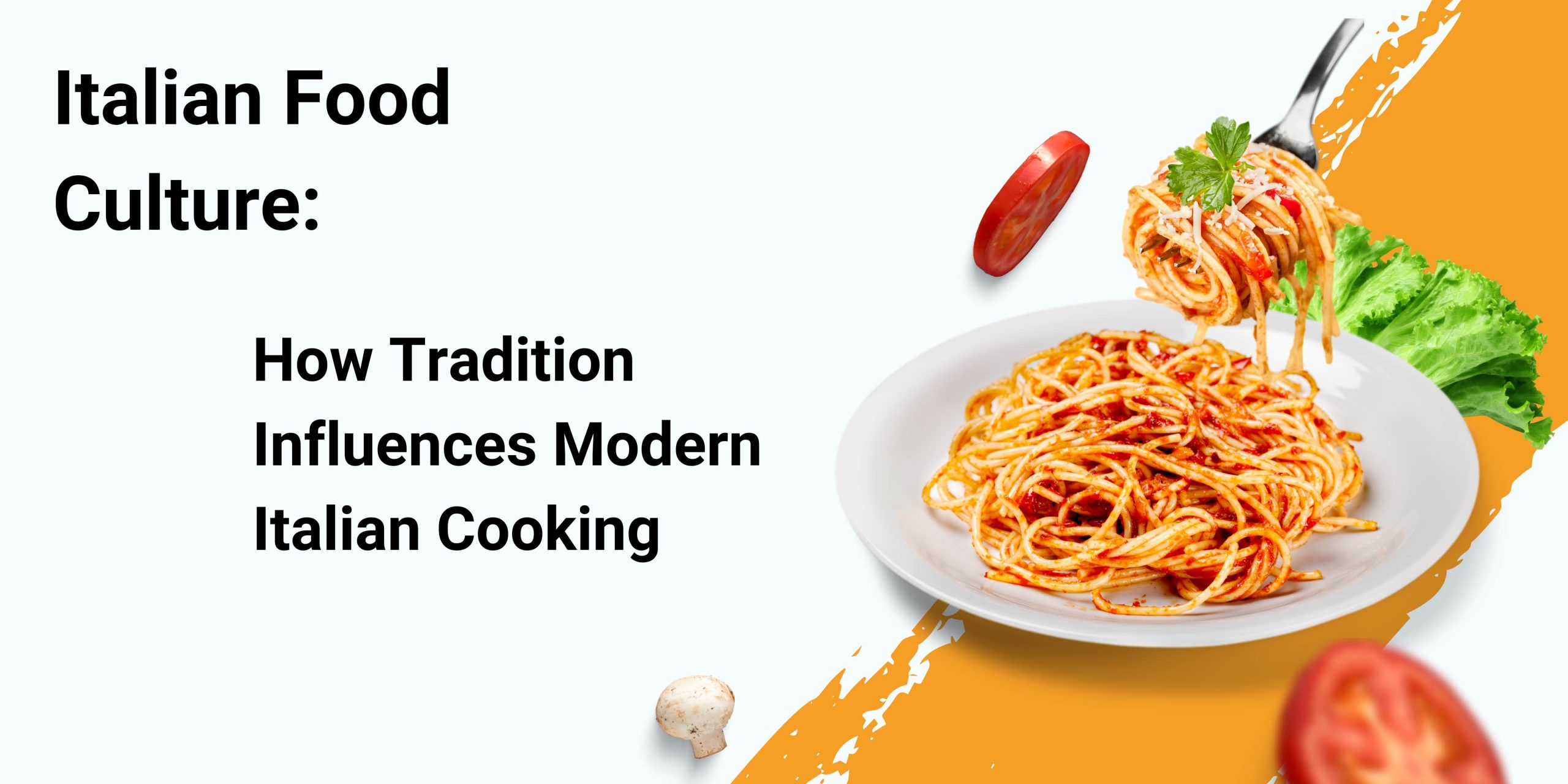Worldwide, Italian food is seen as one of the finest cuisines due to its strong flavor, availability of ingredients, and traditional recipes passed down through generations. But, the reasons behind the uniqueness of Italian cuisine go beyond mere choices related to items or methods; they include strong customs that have made the dish what it has become throughout history.
Be it the lively open-air markets in Sicily or the quaint trattorias hidden away on shady lanes in Tuscany, Italian food culture proves that even today’s cooks still heed age-old traditions.
The Origins of Italian Food Culture
Italian food culture has its beginnings in ancient Rome, where the food was made up of grains, pulses, fruits, vegetation, and wine. Over the years, Italian Cooking has evolved as it took on some influences from Etruscans, Greeks, and Arabs.
New elements such as olive oil, wine, and pasta were introduced by these cultures into Italian food. Besides that, the Italian Renaissance advanced methods of cooking and regional diversity, creating a foundation for today’s rich and diverse cuisines.
Regional Diversity: The Heart of Italian Cuisine
Italy is a place with such diverse terrains and weather conditions that this has prompted a great variety of regional foods. The distinctive dishes made in each area are due to the local products and customs found there. For instance, in the northern part of Italy, butter, rice, and meat are the main components of traditional dishes like risotto or osso buco.
As opposed to this, Southern Italian cooking uses olive oil, tomatoes, and fish, with signature meals such as pasta alla norma and pizza Margherita. This local variety defines Italian gastronomic tradition; contemporary chefs frequently use these classic dishes as a source of motivation.
The Role of Family in Italian Cooking
Not only for survival but also for the sake of kinship, food is a vital part of Italian life. The practice of eating together placed at the center of the table is a highly cherished part of Italian culture. There are often generations-old recipes that have their distinctive twist from every family.
Most Italian foods, such as lasagna, polenta, and tiramisu, are made for shared family meals, depicting the values of togetherness and tradition. Many of today’s Italian chefs honor their ancestors by creating new versions of traditional family recipes still observed in most Italians’ homes.
Seasonality and Freshness: A Core Principle
Perhaps it is observable in their food. Traditional Italian meals tend to be plain, often using less complex ingredients that allow for the actual ingredients of the dishes themselves to speak for themselves.
Modern Italian cuisine still has this emphasis on freshness and season, as cooks nowadays prefer to use local organic products. For quite some time now, Italy has been drinking from the ancient fountain of what is known as “the farm to fork” movement, which is famous across the globe.
The Influence of Italian Culinary Techniques
A few ages for centuries and are deeply rooted in Italian cuisine, the how-to of slowing down, making pasta or baking bread embraced by Italian culinary techniques. In Italy, the procedures for producing slow-cooked ragu, rolling pasta by hand, and baking in wood-fired ovens symbolize more than just cooking but also an inheritance from one generation to another.
Current-day Italian cooks possess high respect for these skills and sometimes combine them with modern methods to create foods that are both historical and modern. This blend of the age-old and the recent makes it so that Italian food will not perish or remain still but continually change gastronomically.
The Role of Italian Food in Social and Religious Rituals
Food is a means of celebration, connection, and love, from festive dinners during Christmas and Easter to Sunday family lunches. It should importantly be noted that cakes like Panic, Colomba, and zeppole are not simply sweets; they reflect a specific cultural identity.
Modern Italian cuisine is still influenced by these ancient traditions; therefore, many chefs today create new versions of old recipes to not lose track of those conventions while making them more palatable for contemporary observers.
Global Influence and Adaptation
Italian food is greatly revered in the world of cuisines for its ideal contributions, and conversely, Italian food has also borrowed from other cultures. There are numerous variations of foods such as pizza, pasta, and gelato in the world due to their worldwide fame. Nevertheless, there is one thing that remains constant in Italian cooking, simplicity, quality, and tradition.
Nowadays, some Italian chefs experiment more and more with foreign tastes and items, which leads to the creation of hybrids that honor classical roots but also follow modern food fashions.
The Finale:
As the contemporary world influences Italian cuisine, its connection to the past remains strong enough to allow it to maintain the flavor and values of yesteryears into tomorrow. No matter if you have an old place in a small Italian village or the contemporary version in a modern restaurant, you are affected by the everlasting Italian food culture.

